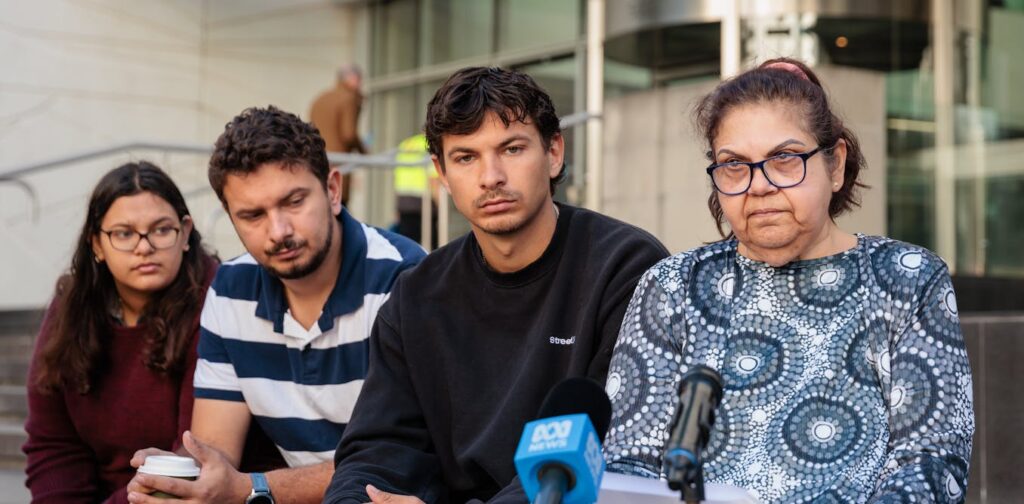
Aboriginal and Torres Strait Islander readers are advised this article contains names and images of deceased people.
The brutal homicide of 15-year-old Noongar Yamatji boy, Cassius Turvey, has once again underscored the racial divides within Western Australian society. Turvey was walking home from school in October 2022 when he was violently attacked and killed by a group of white men. On Friday, the Western Australian Supreme Court sentenced the three perpetrators involved in this heinous crime. Brodie Palmer, aged 29, and Jack Brearley, aged 24, were found guilty of murder and sentenced to life imprisonment. Meanwhile, 27-year-old Mitchell Forth was convicted of manslaughter and received a 12-year prison sentence.
This case presented an opportunity for the Supreme Court to issue a clear denunciation of racial violence. However, while the sentences were severe, the court’s handling of the racial motivations behind the attack has sparked debate and criticism.
Wrong Place, Wrong Time?
From the outset, racism has been at the forefront of public discussions surrounding this tragedy. Shortly after the attack in 2022, Western Australian Police Commissioner Col Blanch suggested the homicide might have been a case of mistaken identity or simply being in the wrong place at the wrong time. This statement was met with widespread condemnation, particularly from the First Nations community.
Rallies in solidarity with Turvey’s family were held nationwide. Gumbaynggirr, Bundjalung, and Dunghutti activist Lizzie Jarrett passionately declared,
“No black child is ever, ever, ever in the wrong place at the wrong time on their own land.”
Racism at Trial
During the trial, the court heard that Turvey and his peers, a group of Aboriginal high school students, were confronted by an aggressive group. This included the three men convicted, a woman named Aleesha Gilmore, who was acquitted of homicide, and Ethan McKenzie, who, along with Gilmore, was convicted of other offences related to the attack.
Turvey was pursued, and Brearley ultimately beat him fatally with a metal pole. The defence argued that the actions were not racially motivated, claiming self-defence due to a prior incident involving Brearley’s car window being smashed. However, the prosecution presented evidence of a phone call in which Brearley boasted about the attack, saying Turvey “learnt his lesson.” Although the prosecution did not explicitly allege racial motivation, the judge had the discretion to consider it.
Over 91 witnesses testified, with some providing evidence that the accused used racial slurs during the attack. This direct racism highlights the potential racial motive, aligning with systemic racism issues in Western Australia. The case echoes the 2016 killing of 14-year-old Elijah Doughty in Kalgoorlie, where racial tensions similarly flared.
Judicial Response and Public Reaction
On the day of the sentencing, Cassius Turvey’s mother described her son as a respected, bright, loving, and compassionate individual. She stated the killing was racially motivated and based on discriminatory targeting. This sentiment resonated nationwide, echoed by figures such as June Oscar, the Aboriginal and Torres Strait Islander Social Justice Commissioner at the Australian Human Rights Commission.
Chief Justice Peter Quinlan condemned the attacks but concluded they were not racially motivated, despite acknowledging the use of racial slurs by the perpetrators. He noted that the attack understandably created fear among Aboriginal communities, reinforcing the perception of a racially motivated crime. However, the court’s public safety concerns did not specifically address racial violence.
Making Racial Violence Invisible
Munanjahli and South Sea Islander professor Chelsea Watego and her colleagues have critiqued the Australian psyche for often engaging with racism as an abstract concept without holding perpetrators accountable. They argue that this approach sanitizes racial violence and fails to address its root causes.
The Supreme Court’s reasoning in this case has set a high bar for identifying and addressing racial vilification and violence. By not recognizing the racial slurs and the targeting of Aboriginal children as racially motivated, the judgement risks perpetuating the notion that racist actions exist in a vacuum, detached from Australia’s colonial history.
The implications of this case are profound, highlighting the need for legal systems to more effectively address and acknowledge racial motivations in crimes. As the nation reflects on this tragedy, there is a call for systemic change to ensure justice is not only served but seen to be served in cases involving racial violence.





